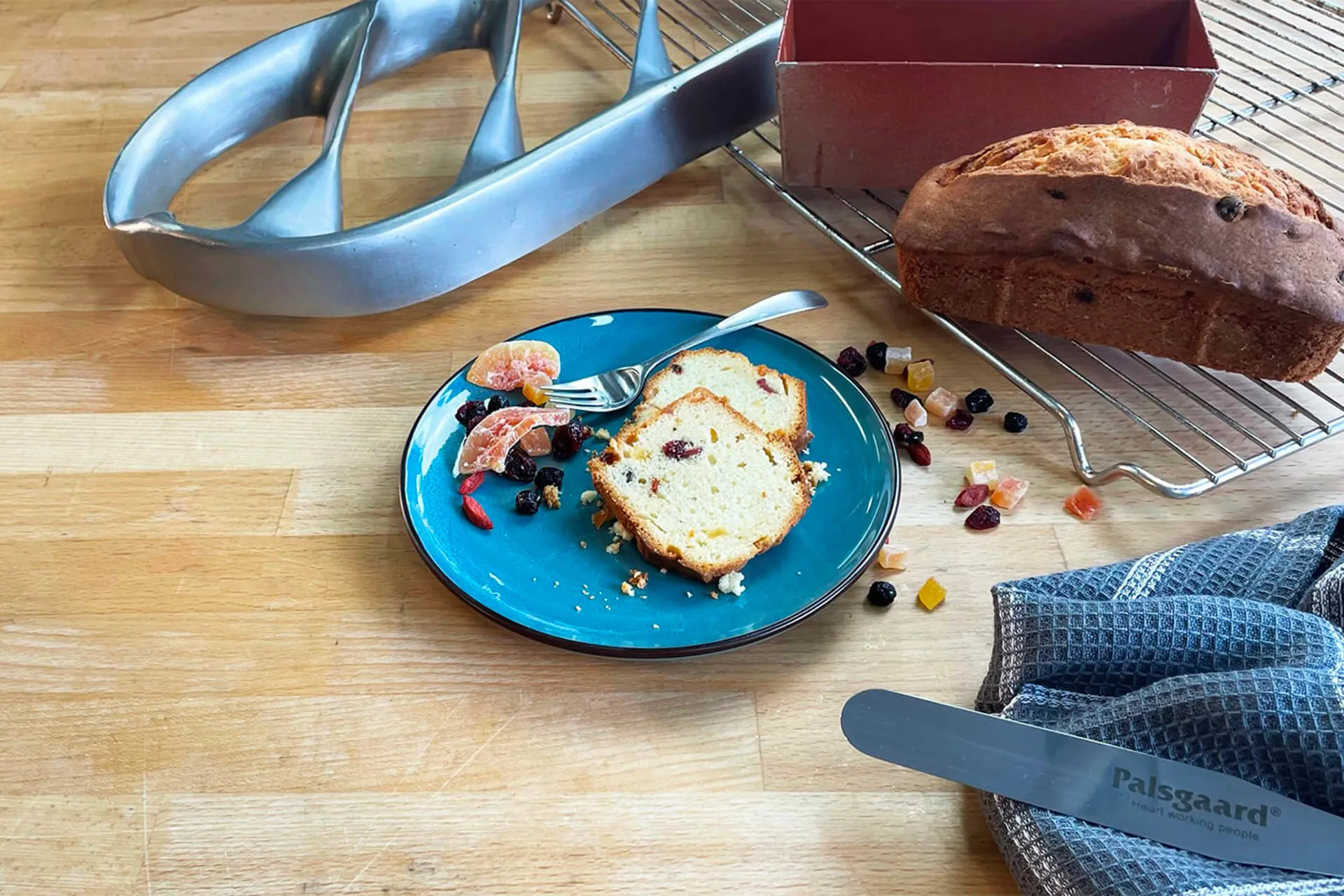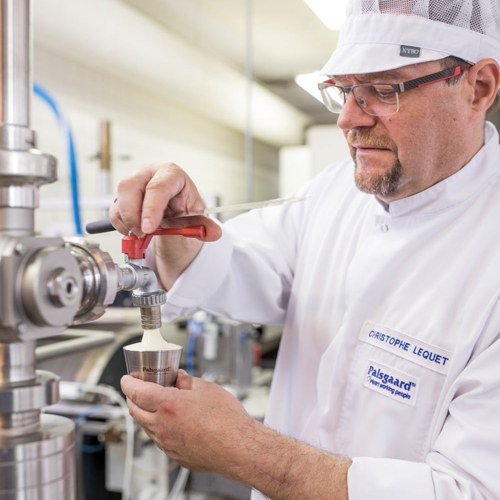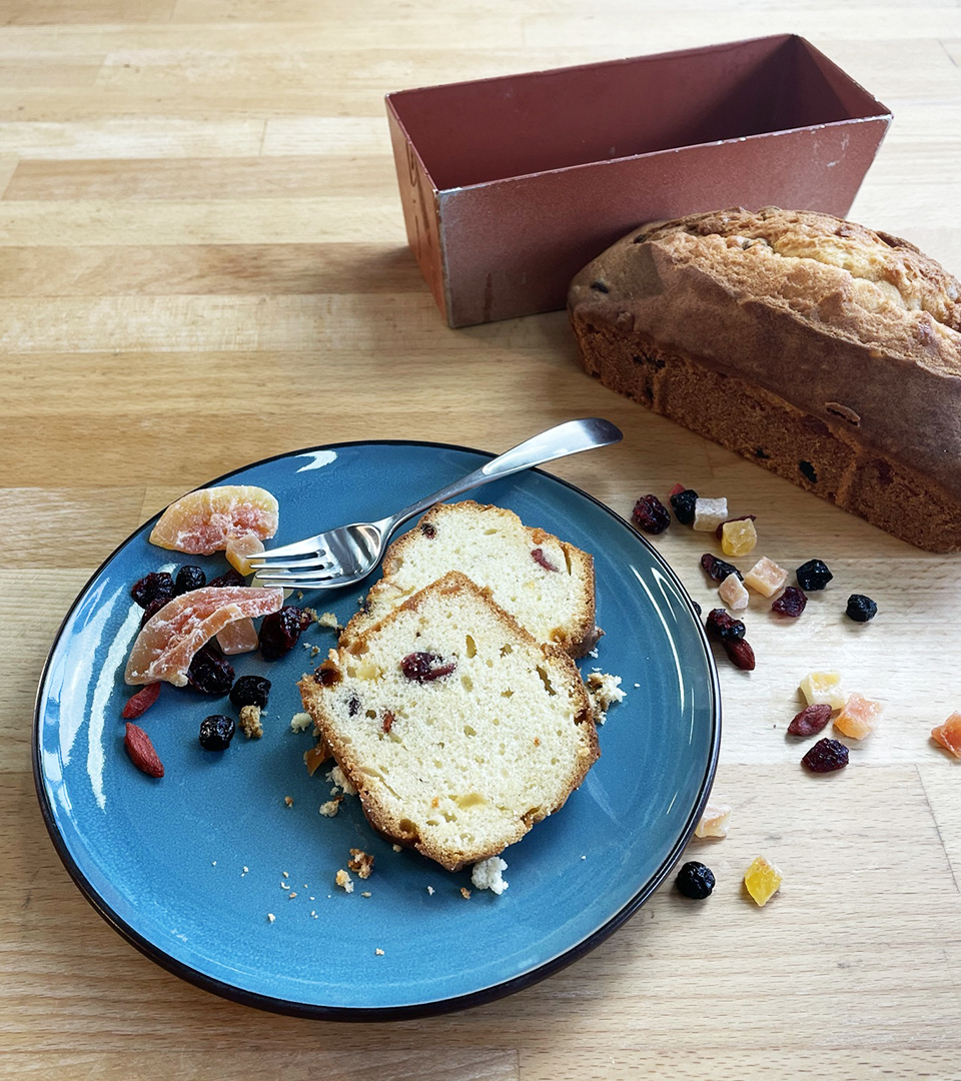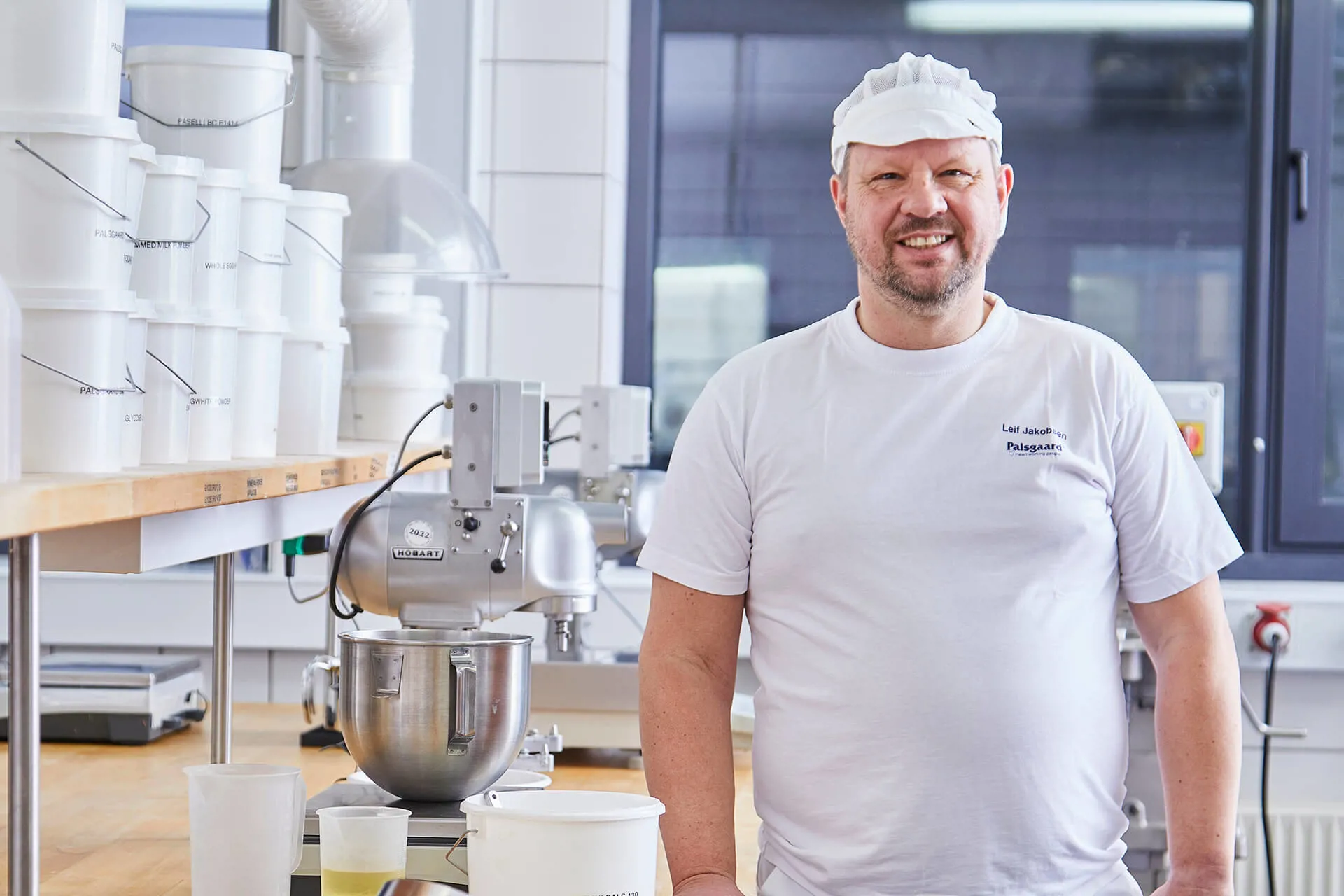
TECHNICAL ARTICLE
TECHNICAL ARTICLE
‘Better-for-you’ is an increasingly important differentiation strategy in the competitive commercial cake market. Here, Christophe Lequet, Senior Application Specialist for Bakery at Palsgaard, offers advice to industrial bakers seeking to create healthier products. He also reveals the secrets of Palsgaard’s new low-sodium superfruit cake – a recipe concept he hopes will inspire the industry to focus on sodium reduction.

“What is a healthier cake?” Christophe asks, highlighting the fact that it’s not a question with an obvious answer. “If you ask me, I have my opinions. If you ask somebody else, they’ll have another. What we definitely can say is that consumers now are paying much more attention to what they put into their mouths.”
He highlights better-for-you as a useful product differentiator: “Producers are looking for novelty – something their competitors don’t have which will improve their positioning on the shelf. That could be a special ingredient – something like purple flour – but alternatively, they can look to remove unhealthy ingredients.”
Cakes are traditionally based on margarine, making them high in saturated fats and sometimes trans fatty acids. One of the best strategies for better-for-you cakes is to switch from these unhealthy fat sources to oils containing unsaturated fat. “Reducing saturated fat is so important,” Christophe says. “The impact on the health of trans-fats is indisputable, and it’s a much bigger issue than it was, say, 20 years ago. Saturated fats increase unhealthy cholesterol levels and the risk of heart disease.”
Large parts of the baking industry have already converted to oil, but others are still using margarine or shortening. The main reason for this is that saturated fats are highly functional, providing aeration, emulsification and structure.
“If you take out margarine, which has a solid state, and replace it with a liquid oil, that can create some challenges,” Christophe explains. “The good news is that they can easily be solved by using an industrial cake emulsifier. The right product can give you the same functional properties but with a considerable decrease in saturated fats.”
He describes Palsgaard® SA 6610 as the “first choice emulsifier” in better-for-you cakes. “It’s the most versatile,” he says. “We always say ‘If you don’t know where to start, start with Palsgaard® SA 6610,’ because it works in any cake and with any equipment. You can use it in very aerated cake batter or low-aerated cake batter. It provides emulsification of course but it also gives you the consistency of performance and stability during processing, which is what industrial producers really need.”
Palsgaard® SA 6610 is an activated powder product, and it can simplify the premixing process: “With other emulsifiers, there can be a four or five-step process – maybe more, depending on the type of cake. With Palsgaard® SA 6610, you can reduce the number of premixing steps to one or two.”
Another benefit of using Palsgaard® SA 6610 is a leaner label. “Before they choose a cake many consumers now look carefully at the recipe,” Christophe says. “If they see a long list of ingredients they don’t recognise, they’re put off, so the fewer E-numbers the better. The main alternatives to Palsgaard® SA 6610 are cake gels, which often include six or seven E-numbers. Palsgaard® SA 6610 contains only one, so it helps you create a leaner label as well as a healthier cake. Palsgaard® SA 6610 makes an emulsion of water, air and fat, and this is essential for industrial cake producers and crucial for the cakes.”
Two further Palsgaard ingredients can help address other big challenges for industrial cake manufacturers. “When you switch from margarine to oil, one of the results can be grease in the cake packaging,” Christophe says. “Our solution to this is Palsgaard® OilBinder 01 which stabilises the oil and entraps it inside the cake so it doesn’t leak out.“
Another big consideration is shelf-life. “It’s very important in the industry because many producers are making cakes for export to overseas markets,” he explains. “Sometimes the transit time can be two to three months, so a long shelf-life is a must.”
Industrial bakers may therefore also want to use a monoglyceride product such as Palsgaard® DMG 5611, which helps prolong shelf-life by slowing retro-gradation, a process whereby starch drains out from the cake. “You can’t stop it but you can slow it,” Christophe says. “A cake without DMG might have a three-month shelf-life. With DMG you can extend that to nine months or more.”
Palsgaard can provide advice on processing as well as recipes. “No two production processes are exactly the same,” Christophe says. “So when a customer asks for a recipe, we also ask what their process is. If you’re switching to liquid oil from margarine, one of the things you’re probably going to have to change is your premixing method and process. We have a small industrial line where we can do trials on cakes, then we can feed back to customers with recommendations.”

Saturated fat isn’t the only unhealthy ingredient Christophe has in his sights – he’s also keen to help industrial bakers reduce sodium levels, and in this, he has some powerful allies. The World Health Organisation has long advocated that people eat less salt, and it has just published new benchmarks recommending that cakes do not contain more than 205mg of sodium per 100g. Targets set by regulators are even tougher: in the EU, a product needs to contain less than 120mg of sodium per 100g to carry a low-sodium claim.
Meeting such targets in cakes can be challenging, not just because of their salt content but because there’s also sodium in flour, milk and eggs. However, Christophe rejects the idea that consumer taste preferences make sodium reduction impossible. “The fact is that an average person consumes 9-12 grams of salt per day, but we only need 1.5g. When I was a kid, the typical level of salt in a baguette was 2.4%. Today it’s more like 1.6. So people were used to eating something very salty, but now that’s changed.”
To prove this, Christophe and his team set out to develop a recipe for a great-tasting cake that could be positioned as low in sodium. Not only did they achieve their goal, but they also managed to tick two other “better-for-you” boxes. As well as being low in sodium, the ‘Industrial Superfruit Cake’ is low in saturated fat and contains four on-trend (and accessible) “superfruits”, as a source of antioxidant and vitamin-rich blueberries, cranberries, papaya and goji berries.
“Our intention was to create a better-for-you cake that really stands out on the shelf,” Christophe says. “It’s low-sodium and has a superfood positioning, so it combines two concepts together. And it’s low in saturated fat too, so it actually ticks three boxes.”
The cake also delivers on taste and visual appearance, while the inclusion of Palsgaard® SA 6610 provides stability, preventing the fruit from sinking to the bottom.

According to Innova, several products were launched with a “low sodium” claim last year, mainly within cereals, crackers and biscuits, but only a few cakes, and Christophe believes there is an opportunity for an innovative cake manufacturer to take the lead and fill the gap.
“I really hope someone will embrace this concept,” he says. “A manufacturer who offered a product like this would be a first mover, and it’s the first mover who sets the standard. When you look at WHO recommendations on sodium, it’s clear that this is the direction the industry needs to go in. Industrial producers have the resources and the necessary control of their recipes – they’re really the ones with the power to make a difference.”

TECHNICAL ARTICLE

TECHNICAL ARTICLE

TECHNICAL ARTICLE

FEATURE ARTICLE

FEATURE ARTICLE

FEATURE ARTICLE

EMULSIFIERS EXPLAINED

TECHNICAL ARTICLE